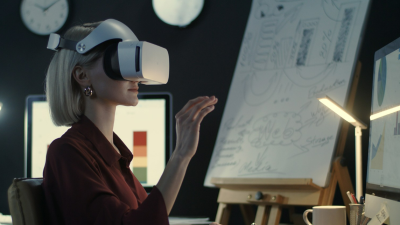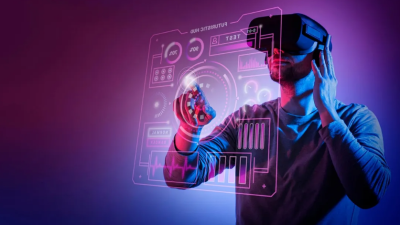ugmented reality is no longer science fiction. It’s transforming healthcare in ways we could only imagine a decade ago.
Walking through hospital corridors today, you might see surgeons wearing special headsets during operations. These aren’t fashion statements – they’re powerful AR tools overlaying critical patient information directly into their field of vision.
What makes this technology truly revolutionary is how it enhances human capability without replacing the human touch that’s essential to medicine.
Surgical Precision Enhanced
AR technology gives surgeons superhuman abilities. By projecting 3D anatomical models onto a patient during surgery, doctors can see beneath the surface before making a single incision.
A surgeon using AR can visualize exactly where to cut, which vessels to avoid, and the safest pathway to a tumor. This level of precision was impossible before.
At Boston Children’s Hospital, surgeons use AR to plan and execute complex heart surgeries with remarkable accuracy. Their success rates have improved dramatically since implementing this technology.
Medical Training Transformed
Remember those heavy medical textbooks? They’re becoming obsolete thanks to AR.
Medical students now learn anatomy by interacting with virtual 3D models that respond to their touch. They can peel away skin layers, examine organs from all angles, and even simulate blood flow through vessels.
The learning experience becomes active rather than passive. Studies show retention rates increase by nearly 40% when students use AR compared to traditional methods.
Patient Education Reimagined
Explaining complex medical conditions to patients has always been challenging. AR bridges this communication gap effectively.
Instead of showing generic diagrams, doctors can now project personalized 3D models showing a patient’s actual condition. This makes abstract medical concepts concrete and understandable.
When patients better understand their conditions, they make more informed decisions and follow treatment plans more faithfully.
Remote Expertise When Needed Most
In rural areas, access to specialist care can be limited. AR is changing this reality.
Through AR-enabled telepresence, specialists can guide local physicians through complex procedures remotely. They see what the local doctor sees and can draw directly in the local doctor’s field of vision.
This application of AR has already saved countless lives in emergency situations where every minute counts.
Challenges to Overcome
Despite its promise, AR in healthcare faces hurdles. The technology is expensive, and integration with existing hospital systems can be complicated.
Privacy concerns also exist. Medical data projected through AR must remain secure and confidential.
Additionally, as with any emerging technology, healthcare regulations are still catching up. Clear guidelines for AR use in clinical settings are still evolving.
The Future is Already Here
At our clinic, we’ve seen firsthand how AR transforms patient understanding and engagement. The technology doesn’t just improve clinical outcomes – it fundamentally changes how patients experience healthcare.
We believe AR will soon become as commonplace in healthcare as the stethoscope. The possibilities for improving care are limited only by our imagination.
What’s Next for AR in Healthcare?
The coming years will bring even more innovative applications:
AR-enabled contact lenses that monitor vital signs continuously and alert wearers to potential health issues before symptoms appear.
Personalized rehabilitation programs where patients interact with virtual objects calibrated precisely to their recovery needs.
Surgical AR systems that can predict complications before they occur by analyzing patterns invisible to the human eye.
Embracing the AR Revolution
Healthcare has always advanced through technological innovation. From X-rays to MRIs, each new technology expanded our ability to heal.
AR represents the next great leap forward – not by replacing human providers, but by enhancing their natural abilities and extending their reach.
For patients and providers alike, the future of healthcare looks brighter through augmented reality.





